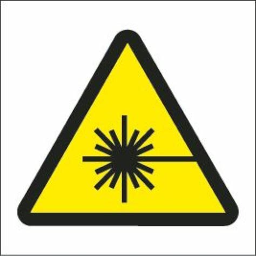Electronics
 Using an I2C analog-to-digital converter chip with the Raspberry Pi, from the ground up
Using an I2C analog-to-digital converter chip with the Raspberry Pi, from the ground upThis article is about using an I2C analogue-to-digital device for applications like reading sensor values or monitoring backup batteries. With all the technical bits left in.
Categories: Raspberry Pi, electronics, embedded computing, C
 Using an I2C analog-to-digital for temperature measurement on the Raspberry Pi
Using an I2C analog-to-digital for temperature measurement on the Raspberry PiThis article describes how to do simple temperature measurement with a Raspberry Pi, and I2C analog-to-digital converter, and a thermistor.
Categories: Raspberry Pi, electronics, embedded computing, C
 Why do we use 'complex impedance' in electrical engineering?
Why do we use 'complex impedance' in electrical engineering?AC circuit analysis relies heavily on complex numbers, and the concept of 'complex impedance'. But why? What actually is a complex impedance?
Categories: mathematics, electronics
 They don't make them like that any more: Denshi block electronics kits
They don't make them like that any more: Denshi block electronics kitsDenshi block kits were a unique way to learn about electronics back in the 70s.
Categories: TDMTLTAM, electronics
 Is dithering necessary when reducing the number of bits per sample in an audio waveform?
Is dithering necessary when reducing the number of bits per sample in an audio waveform?The use of dithering when mastering a CD is well-established, and its effectiveness is rarely challenged. But is it beneficial in other circumstances when we need to reduce the bit depth of an audio stream?
Categories: hifi, electronics
You'd think you could improve the cooling of a laptop by fitting extra fans under its air intakes. Seems not.
Categories: electronics, general computing
 Why you can sometimes connect 3.3V and 5V I2C devices (and probably shouldn't)
Why you can sometimes connect 3.3V and 5V I2C devices (and probably shouldn't)On websites, and in hobbyist kits for Raspberry Pi and Arduino, you'll often see I2C devices connected that have different supply voltages. This is (usually) safe and, in non-critical applications, tends to work. But why?
Categories: Raspberry Pi, electronics, embedded computing, Pico
 Why your cheap mains inverter could kill you
Why your cheap mains inverter could kill youA mains inverter is a very useful device, but inexpensive models create significant electrical safety hazards. This article explains why.
Categories: electronics
 Making tab-and-slot boxes for electronic prototypes. Or: how I stopped worrying and learned to love the laser
Making tab-and-slot boxes for electronic prototypes. Or: how I stopped worrying and learned to love the laserSome thoughts on my first experiments with the design of electronics enclosures for laser cutting.
Categories: Raspberry Pi, electronics
 Why switching high currents using a MOSFET and a Raspberry Pi is not as straightforward as it looks
Why switching high currents using a MOSFET and a Raspberry Pi is not as straightforward as it looksUsing a single MOSFET transistor for power switching in microcontroller applications is simple and low-cost, but it often doesn't work as well as expected. Either the switched device doesn't run at full capacity, or the MOSFET gets hot. This article explains why.
Categories: Raspberry Pi, electronics, embedded computing
 Some thoughts on always-on OLED displays on smart watches
Some thoughts on always-on OLED displays on smart watchesWhy an expensive smart watch is still less good than a cheap Timex, when it comes to telling the time.
Categories: electronics
 Handling GPIO-connected switches robustly in C on the Raspberry Pi
Handling GPIO-connected switches robustly in C on the Raspberry PiIt's surprisingly difficult to detect switch actuations in a robust way, dealing with contact bounce and other quirks. This article describes one approach to the problem in C.
Categories: Raspberry Pi, electronics, embedded computing
 Converting push-button events to keyboard events in the Raspberry Pi
Converting push-button events to keyboard events in the Raspberry PiThe Raspberry Pi has a bunch of GPIO pins we can use to connect push-buttons. But how do we interface push-buttons to an application that expects only keyboard input?
Categories: Raspberry Pi, electronics, Linux
 Switching a couple of amps with a Raspberry Pi and a relay
Switching a couple of amps with a Raspberry Pi and a relaySwitching loads of an amp or two with a Raspberry Pi or a microcontroller can be accomplished using a small number of inexpensive components. Suitable circuits are widely published, but the details of operation are not always described.
Categories: Raspberry Pi, electronics, embedded computing
 Powering a Raspberry Pi from an attached Waveshare USB HAT
Powering a Raspberry Pi from an attached Waveshare USB HATAttaching high-capacity hard disks has always been a bit of a problem for the Raspberry Pi. In this article I describe a simple modification to a Waveshare USB HAT, that allows it to power both the attached drives and also the Pi itself.
Categories: Raspberry Pi, electronics
 A Raspberry Pi and touchscreen case that anybody can make
A Raspberry Pi and touchscreen case that anybody can makeThis is a design for a robust, wooden enclosure for a Raspberry Pi, battery power supply, and touchscreen, that can be made using hand tools.
Categories: Raspberry Pi, embedded computing, electronics
 Making an 8x32 LED auxiliary display with a USB interface, from an LED matrix and a Raspberry Pi pico
Making an 8x32 LED auxiliary display with a USB interface, from an LED matrix and a Raspberry Pi picoA specific application of the Pico7219 library that I described in an earlier article.
Categories: embedded computing, Pico, electronics
 Using the Pi Pico with an L298N module to control a 12V motor
Using the Pi Pico with an L298N module to control a 12V motorThe L298N is a convenient and inexpensive H-bridge motor controller, which interfaces nicely with the Pi Pico.
Categories: electronics, embedded computing, Pico
 Adding a floppy disk controller to my RC2014 Z80 system
Adding a floppy disk controller to my RC2014 Z80 systemNo 80s computer is complete without the chucka-chucka-chucka sound of a floppy disk drive doing its thing.
Categories: electronics, Z80, retrocomputing
 Designing a dual 5V-to-RS232 serial level converter for the RC2014
Designing a dual 5V-to-RS232 serial level converter for the RC2014Using an RC2014-based retrocomputer with genuine RS232 peripherals requires support for voltage level conversion. Although converter modules are inexpensive and widely available, I wanted to design something that would plug into an RC2014 backplane, just for neatness.
Categories: electronics, Z80, retrocomputing
 Some thoughts on a DS1302 real-time clock board for RC2014/Z80 and CP/M
Some thoughts on a DS1302 real-time clock board for RC2014/Z80 and CP/MConstructing and programming a real-time clock board for my Z80 CP/M system
Categories: C, electronics, Z80, retrocomputing
 Constructing and programming a YM2149 sound board my RC2014 Z80 system
Constructing and programming a YM2149 sound board my RC2014 Z80 systemAn 80's-style 8-bit computer has to be cable of making 80's 8-bit sound. In this article I describe adding a sound board to my RC2014 system.
Categories: electronics, Z80, retrocomputing
 Exchanging files between an SC130 CP/M board and a Linux system
Exchanging files between an SC130 CP/M board and a Linux systemThis article describes a couple of methods for sharing data and code between a CP/M system with RomWBW BIOS and a Linux system.
Categories: C, electronics, Z80, retrocomputing
 Why RMS watts is a useless measure of power
Why RMS watts is a useless measure of powerIt's common for hifi amplifiers and speakers to have a power rating expressed in terms of RMS watts. Although RMS amplitude is an important concept in electronic engineering, it's meaningless here, and should be avoided.
Categories: hifi, electronics
 Using the Raspberry Pi official 7-inch touch-screen in embedded applications
Using the Raspberry Pi official 7-inch touch-screen in embedded applicationsThe official Raspberry Pi 7-inch touchscreen is a useful and well-designed piece of equipment but, if you're using it in a custom (hardware and/or software) build, you'll notice a lack of any relevant technical information. This article tries to supply some of that information.
Categories: Raspberry Pi, electronics, embedded computing
 Why does my Raspberry Pi project keep displaying the 'lightning bolt' undervoltage indicator?
Why does my Raspberry Pi project keep displaying the 'lightning bolt' undervoltage indicator?The Raspberry Pi is widely used as part of a more complex electronic project or construction. There's a misconception that such a construction can be powered from the same cheap, nasty USB charger that is suitable to power a Pi on its own. Attempting to do this often leads to undervoltage situations. This article explains why, and what constructors can do about it.
Categories: Raspberry Pi, electronics, embedded computing
 They don't make 'em like that any more: tone controls
They don't make 'em like that any more: tone controlsHi-fi snobs and complacent manufacturers colluded to rob us of our tone controls in the 90s. Why should we care?
Categories: TDMTLTAM, electronics
 Why your vintage turntable could kill you
Why your vintage turntable could kill youVintage vinyl records ought, perhaps, to be played on a vintage turntable. Although such appliances are still widely available, and can work well, they fall short of contemporary electrical safety standards.
Categories: electronics, hifi
